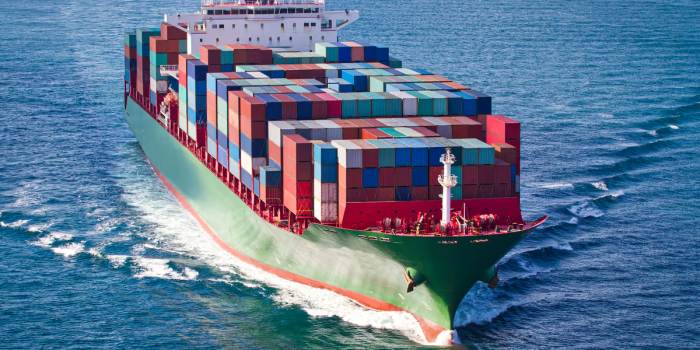The “Blue Visby Solution” promises greater fuel and emissions savings for cargo ships worldwide through smarter speed and timing management, without modifying the ships themselves.
This approach addresses inefficiencies in the shipping industry, which is responsible for around 3% of global man-made carbon emissions. Right now, most cargo ships follow a “sail fast, then wait” (SFTW) practice, traveling quickly from port A to port B regardless of scheduling at the destination. The Blue Visby Solution proposes a different approach: slow down to arrive just in time, reducing fuel consumption and emissions without affecting cargo delivery speed.
“We took up the challenge of making every aspect of the on-street charging experience faster and better and can’t wait to deploy our new DEAP Trees by the thousands,” said Gravity founder and CEO, Moshe Cohen.

The Blue Visby Solution requires wide-ranging coordination, engagement, and connectivity from numerous worldwide parties. Reduced speed lowers hydrodynamic drag, resulting in significant fuel savings and reduced pollution. Studies based on data from 3,651 Panamax vessels performing 20,580 journeys in 2022 indicate that this strategy could reduce emissions by a median rate of 23.2%.
Later studies by NAPA, a member of the Blue Visby Consortium, which examined 150,000 trips from 13,000 cargo ships in 2019, revealed that 87% of voyages could slow down by an average of one knot, fulfilling all requirements and cutting emissions by 16%.
Two bulk carriers, the M/V Gerdt Oldendorff, and the M/V Begonia, participated in the Blue Visby Solution’s initial sea testing. While traveling to Australia, they deployed each solution component, including operational systems and software. The M/V Gerdt Oldendorff achieved a reduction of 28.2%, while the M/V Begonia saw a reduction of 12.9%, averaging a 17.3% reduction overall.

These results are more significant than those achieved by some large sail systems without any ship modifications. Eliminating the SFTW practice, which dates back to the age of sail, presents a substantial challenge due to its deep integration into long-term contracts between shipping companies, customers, ports, dockworkers, and other logistics services.
The Blue Visby Consortium has developed a contractual framework with a multilateral benefit-sharing mechanism. This allows ship owners, charterers, and cargo interests to share costs and benefits, such as fuel savings and financial gains from emissions reductions.
Beyond fuel and emissions savings, the Blue Visby Solution offers additional benefits: reducing waiting periods at anchor minimizes hull fouling, improving efficiency over time. It also enhances air quality near ports, reducing underwater noise pollution and whale strike risks.
The solution is a win for most stakeholders and the planet. As decarbonization technologies progress, sailing slower will save money and extend range, making clean cargo shipping more viable.

“Decarbonization is unattainable without energy efficiency, and energy efficiency is impossible if ships continue to Sail Fast Then Wait,” state Blue Visby Consortium coordinators Haris Zografakis and Pekka Pakkanen.
“The CBH Prototype Trials demonstrate that the Blue Visby Solution will be a central element of any successful decarbonization strategy for all maritime stakeholders: shipowners, charterers, traders, cargo interests, terminals, and ports.”
“We are very excited to see the results of the Prototype Trials, conducted with invaluable support from Consortium member CBH Group,” says CEO Christian Wounlund.
“All components of the Blue Visby Solution were tested: contracts, software, operations, and the benefit-sharing mechanism. While the Virtual Pilot Program and the Prototype Trials will continue in the coming months, we are on track for commercial deployment this year.”
Source: Blue Visby


